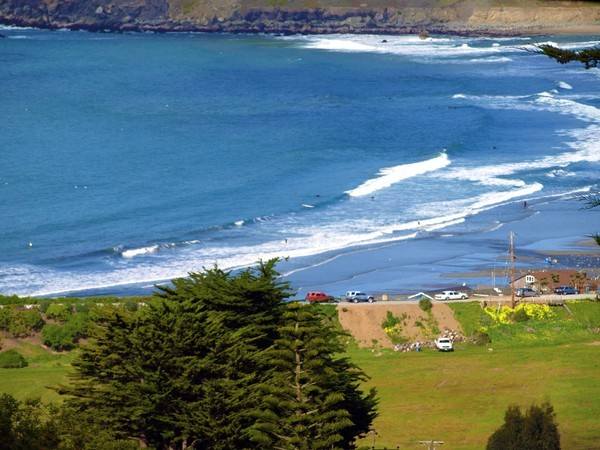
All of the plastic we’ve ever made is still in our environment, and a startling amount of it is in our oceans. Learn what others are doing locally to eliminate plastic from their lives.
Last week, Ocean Shore School celebrated its annual Ocean’s Week curriculum; a school-wide educational focus on the oceans and their habitats.
The program weaves information about the oceans throughout all the subjects from art and music to science and mathematics. Driving down Highway 1, I spotted a number of classes fulfilling a community service component of the program. Students were picking up trash from Linda Mar Beach. Each year when I witness this program at Ocean Shore, I am reminded of the connection between the land and sea and our responsibility as stewards of both.
More often than we realize, our actions on land have a profound impact on the marine environment. Chief among these actions is our wide use of plastics, which find their way into the to be ingested by marine life.
With highly publicized recycling campaigns for many of our consumer plastics, it’s easy to become complacent about using them. However, it’s important to note that in spite of these campaigns, less than 5% of plastic is recycled. Most plastic is simply thrown away after a single use. According to Greenpeace, approximately 100 million tons of plastic is produced each year, of which 10 percent finds its way into the ocean.
Blown into the oceans from land or swept in from rivers, our plastic trash is filling the oceans at an alarming rate. At present, the Pacific Gyre contains a revolving mass of floating plastic weighing roughly 7 million tons. Referred to as the Pacific Garbage Patch or the Pacific Vortex, this mass of plastic does not biodegrade. Rather, it breaks down into smaller and smaller pieces and is deposited on our beaches in tiny particles or is ingested by wildlife. Studies have shown that at current ratios, there is roughly 6 times as much particulate plastic in the Pacific Ocean as zoo-plankton.
In addition, plastics leech hormone-disrupting chemicals into the water and the animals that ingest them, further damaging the food chain. Plastics have the potential to collect microorganisms and bacteria, thus carrying them to areas in which they would not be found naturally. This is ominous, as the introduction of non-native species can cause profound and irreparable harm to an ecosystem.
While the magnitude of the problem seems insurmountable, there is hope for a cleaner future. Locally, there are a number of heroes who have begun to make a stand for a future free from plastic.
The Pacifica Beach Coalition is well known throughout town for their annual ?Earth Day cleanup? and monthly beach cleanups. Coming June 3, they will be presenting the film Bag It: Is Your Life Too Plastic?, by director Suzan Beraza at the ?Sanchez Art Center?. It’s sure to be an educational experience and give all of us renewed purpose to eliminate the plastic in our lives.
Kyle Thiermann, a Santa Cruz native pro surfer and environmental activist, has publicized the topic with the release of his latest short movie titled Where is Away: Solving Plastic Pollution in 4 Minutes. In the movie, Kyle shares a couple of simple steps each of us can take to help solve the problem, such as using a refillable stainless steel water bottle and using reusable cloth grocery bags.
The Surfrider Foundation has a petition campaign called “Take the Plastics Pledge” that promotes weaning yourself from dependency on plastics. In addition, they have an active campaign in Santa Cruz to ban plastic bags from distribution in local stores similar to the ban imposed recently in San Francisco. Tell your local retailers that plastic bags are harmful to the environment and the health of the planet and encourage them to adopt a paper bag policy as an alternative.
Plastic cannot simply be cleaned from our oceans since most of is too small to be removed by anything but high-intensity trawling–a process similar to industrial shrimp harvesting, in which a large net is dragged through the water. While this would remove the plastic, it would also kill an enormous amount of wildlife in the process, exacerbating an already dire problem. The only answer to the Pacific plastics problem is education. So, it’s encouraging to see the youth at Ocean Shore School out at the beach and in the classroom learning about conservation and actively involved in it.

